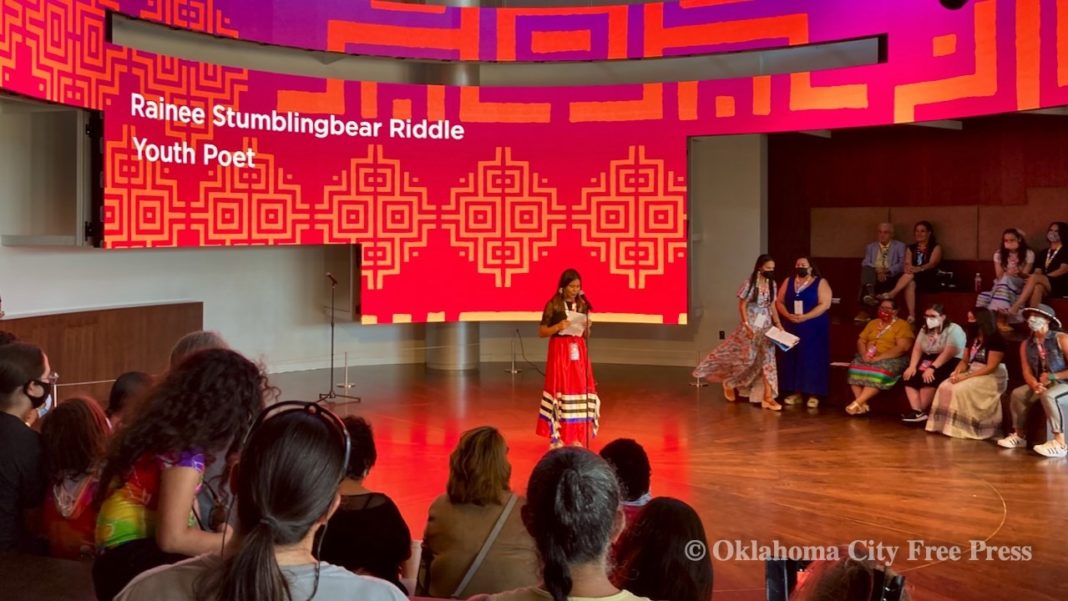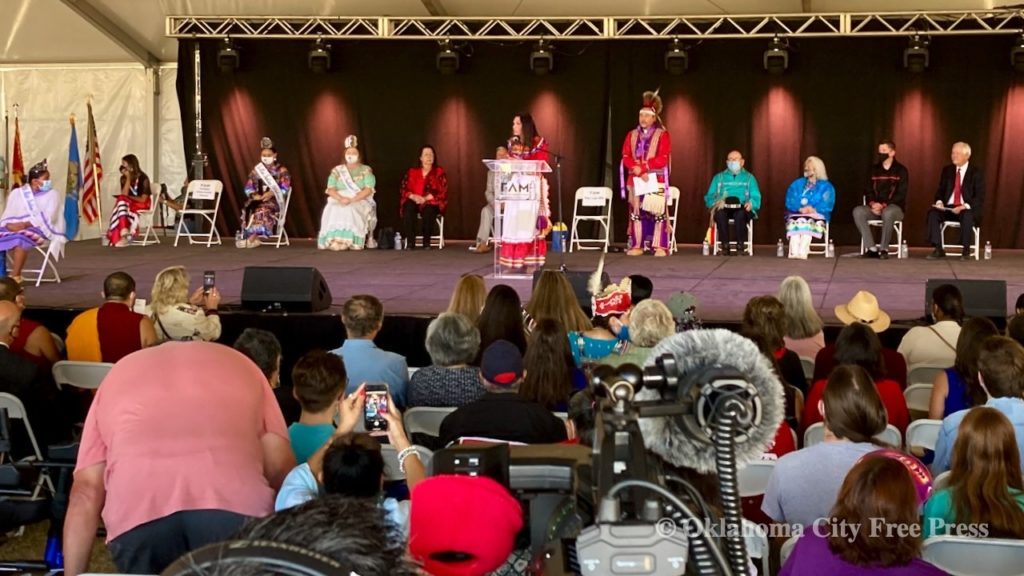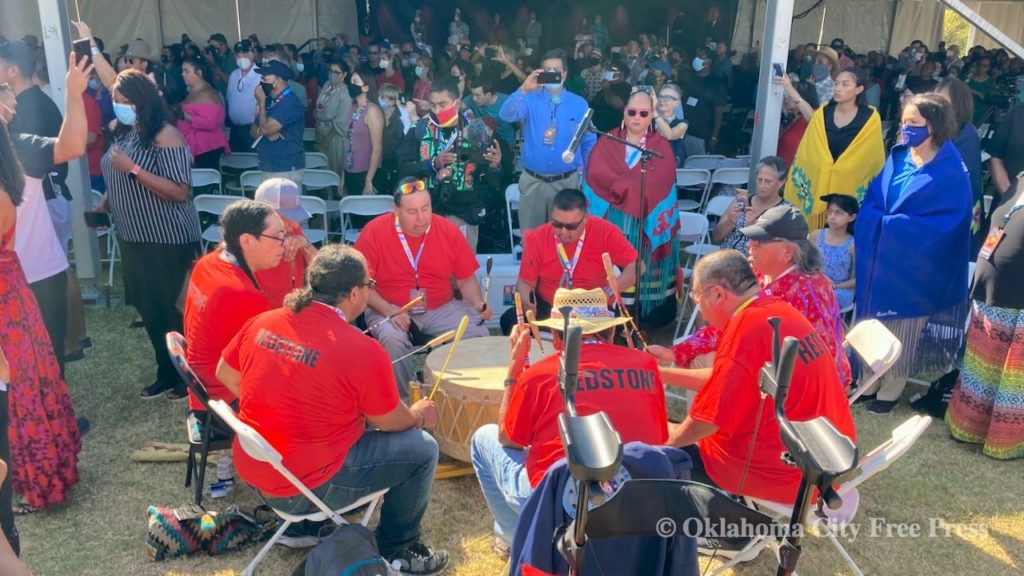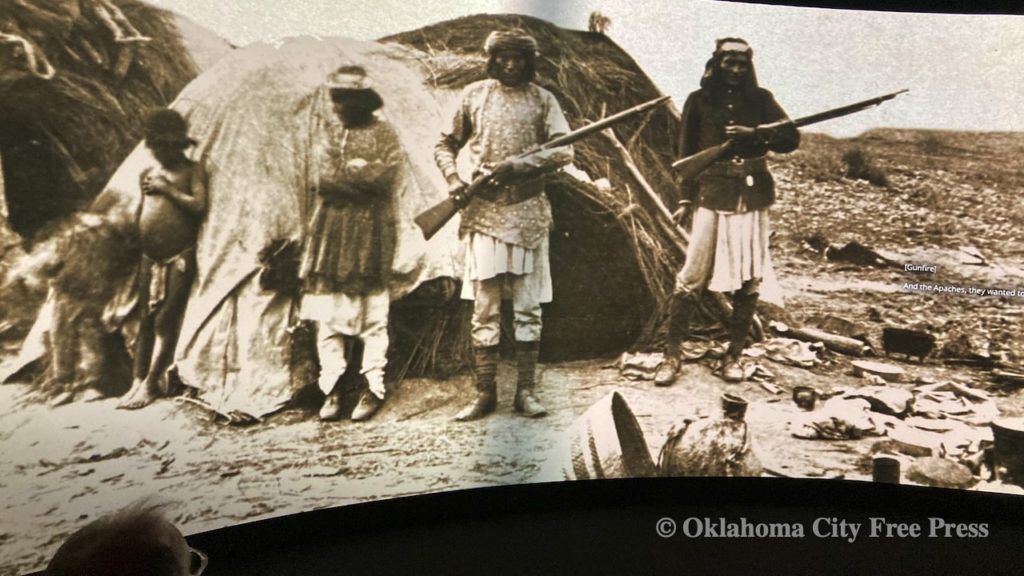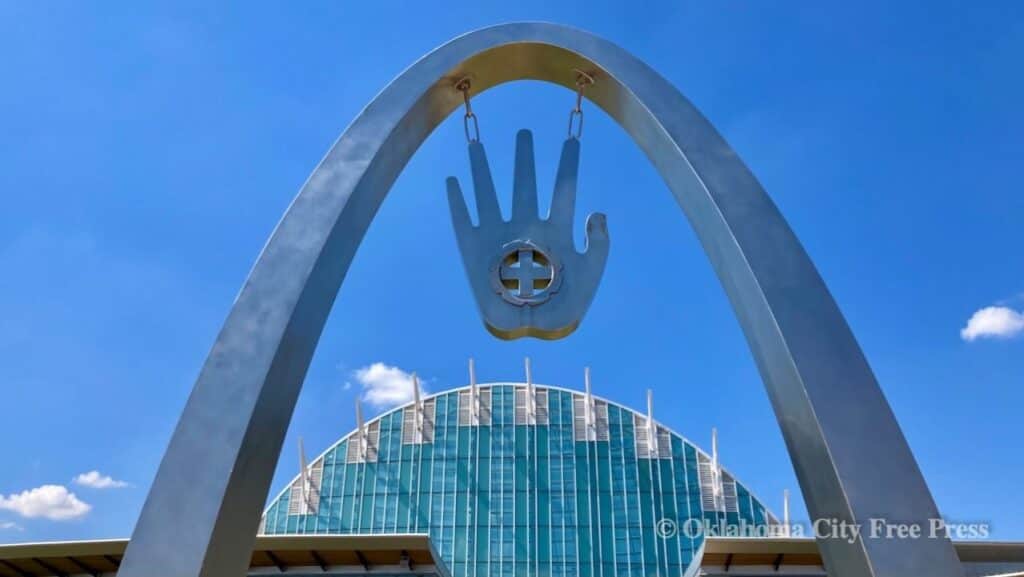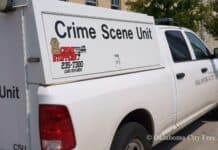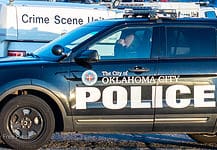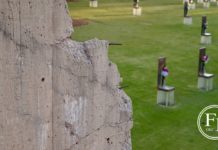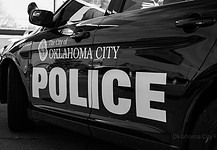Last Updated on September 20, 2021, 2:48 PM | Published: September 19, 2021
OKLAHOMA CITY (Free Press) — After more than 16 years of effort, the First Americans Museum finally opened its doors to the public Saturday with a grand opening ceremony that saw heartfelt speeches, music, and a truly special ceremonial procession of representatives of each of Oklahoma’s thirty-nine Native tribes.
Blunt honesty
But amidst the festivities and the joys of the day, the overarching theme of the event was an openness and blunt honesty about the violence of American history and the hardship of the Native people that is very rarely offered so publicly.
“Hello, and welcome to your museum!” was the emphatic opening line from FAM’s Executive Director and CEO James Pepper Henry to the gathered crowd of honored guests and visitors, nearly all of whom were themselves citizens of the various tribes.
Many were wearing patches or clothing memorializing lost or dead Native family members or friends. A group of women wore t-shirts proclaiming “No More Stolen Sisters,” a popular rallying slogan for the cause of raising awareness of the ongoing crisis of Missing and Murdered Indigenous women.
The mood of the day was as solemn as it was celebratory.
Different
“Historically, museums have not been friendly or welcoming places for First Americans,” Pepper Henry continued. “Many museums were, and still are, extensions of colonization, serving as repositories for the spoils of war and conquest by European nations over Indigenous peoples throughout the world. For many Native peoples, museums are reminders of what has been taken, and what has been lost.”
OKC’s First Americans Museum, Pepper Henry made clear, would be, and is, different.
Boasting an entirely Native curatorial board, as well as a group of prominent tribal “knowledge givers,” FAM’s mission is to create the first-ever museum designed purely to give Native people the opportunity to not only tell their story in their own words but to show their history on their own terms.
“Healing medicine”
Another of the day’s speakers, and one of the most instrumental leaders in the development of FAM, Dr. Henrietta Mann, equated the creation of the museum to “adding healing medicine to the heartbreak of history.”
That history, she explained to the audience with open and brutal honesty, included “a three-pronged cultural assault” on the First Americans in which “the federal government, the church, and education were used to assimilate this land’s first peoples, and displace them to make way for what they called ‘Manifest Destiny.’”
This sentiment of facing the historical reality of the Native experience extended far beyond the comments of the day.
Indeed, the majority of FAM’s extensive and beautifully conceptualized main exhibit is focused on the forced displacement and systematic killing of the many tribes by the American government and military, focusing primarily on the period between the establishment of “Indian Territory” in the early part of the 19th Century to the eventual creation of the state of Oklahoma in 1907.
The exhibit not only highlights well-known issues such as the Dawes Act and (in a notably somber and harrowing video installation) the Apache Wars but also makes special mention of lesser-taught historical touchstones, such as the twice-failed attempts of the tribes to present their own application for recognized statehood long before the white settlements of the Land Run.
“Just the truth”
The adherence to these difficult truths, and the commitment to providing a welcoming and inclusive place to tell them, was already resonating with visitors — especially First American visitors — just hours into the museum’s first day.
“It’s very exciting to get to experience this and to have all of this information passed down,” said Brittany Taylor, a young museum visitor who identified herself as a member of the Cheyenne-Arapaho tribe. “I think it’s pretty awesome that this whole experience is here to educate people so they know what Oklahoma is about.”
Whereas a number of non-Native Caucasian visitors all declined to speak on the record about the exhibit’s stark depiction of the violence perpetrated against the tribes, Taylor had no such hesitance.
“We are educated as we grow up about these things,” she said. “It’s just stories that get passed on into our family, and it’s kind of awakening to people that aren’t well-educated or even know about some of the history that goes on for the Indigenous and Native American people.”
When asked what she hopes FAM will offer to its visitors, both Native and otherwise, Taylor echoed many of the sentiments of the museum’s founders and curators from earlier in the day.
“Just the truth,” she said. “Why we are the way that we are, and the actual history and why it is so important for us to fight for our rights and to fight for recognition of the things that we did go through because it wasn’t easy for Indigenous people.”
First Americans Museum is located at 659 First Americans Boulevard, just south of I-40, in OKC. The museum includes a café, full restaurant, and large store and gift shop. Membership options, operating hours, schedules of events and exhibits, and more can be found online at famok.org.
Feature photo: Sixth-grader Rainee Stumblingbear Riddle reads her poetry at First Americans Museum opening Sept 18, 2021 (BRETT FIELDCAMP/Okla City Free Press)
Brett Fieldcamp has been covering arts, entertainment, news, housing, and culture in Oklahoma for nearly 15 years, writing for several local and state publications. He’s also a musician and songwriter and holds a certification as Specialist of Spirits from The Society of Wine Educators.
